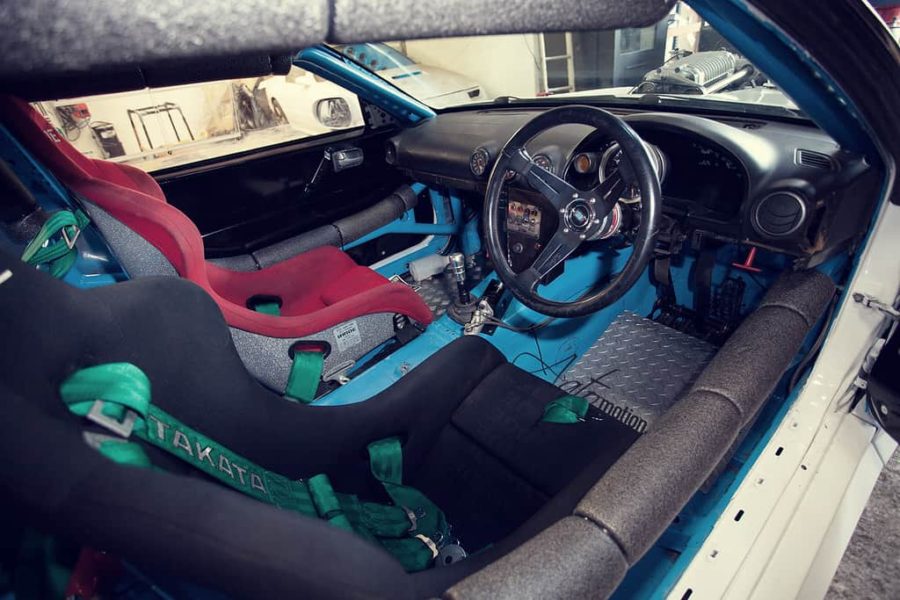Making a drift car isn’t just about throwing a ton of power in a light chassis. Well, it’s partly about that, but that’s not all! A drift car wouldn’t be complete without a matching interior, one that has the function to control the car effectively. Different parts have different functions, each just as important as the other. Plus, extra style points for putting these in!
All of the tables in the article contain images, which are links to the authentic parts for cheap.
1) Steering Wheel

This shouldn’t come as a surprise to anybody. While the stock steering wheel does work, it’s heavy and squishy. Most stock steering wheels are made to be comfortable more than anything. The airbag inside also provides rotational inertia, which is bad for a steering wheel.
Replacing the stock wheel with an aftermarket one significantly reduces the weight of the wheel, reducing its inertia. Inertia is bad in a drift steering wheel because it resists the flicking motion that almost all drifters do. Once the heavy wheel is in motion, though, it becomes much harder to stop as well. This can lead to imprecise inputs, and your car either spinning out or diving into the wall.
A lighter wheel doesn’t resist the flick of a drifter, and is much easier to catch, allowing for exact inputs. Without all that padding, you can also feel the steering column much better, allowing you to feel what the car is doing. These wheels are much more firm too, making for an all-around better driving experience.
Which Wheel To Buy?
This is a matter of personal preference, mostly. There are a few things you should keep in mind when picking one though. Radius, Depth, and Shape.
The radius of the wheel is how big it is. While the margins may seem small at first (~30mm), this can make a huge difference while driving. A 90 degree turn with a small wheel requires less movement from the driver, allowing you to feel the steering much quicker than with a larger wheel. While drifting, the larger wheel allows for smaller inputs, but makes larger inputs slower than with a smaller wheel.
The depth of the wheel adjusts how close/far the wheel is from you. This also adjusts the angle of the spokes. Getting into a crash sucks, but if your thumbs are up against those spokes, you’ll be having a particularly bad time (and two bent thumbs).
Lastly is the shape of the wheel. There are some that have flat bottoms, some with flat bottoms and flat tops, and some just without bottoms or tops. For drifting, the flick is crucial, so a perfectly round wheel is ideal.
| Small | Large | |
|---|---|---|
| Shallow |  | 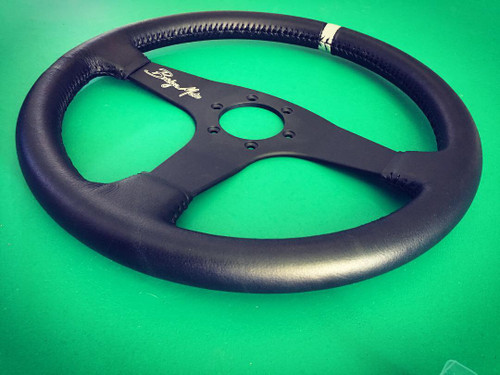 |
| Deep |  |  |
Remember, picking the right wheel for you isn’t just about function, but looks as well! A new steering wheel can completely change the look and feel of your car’s interior.
2) Racing Seat
 Picking up a new racing seat is next on the list of interior mods. This is the most important modification, as this changes the feel of the entire car, and how connected you are to it. With a normal car seat, you’re prone to slide from side to side, front and back, and every way in-between. With a nice bucket seat or racing seat, however, you’re planted. You won’t be sliding anywhere, and more importantly, you’ll feel every movement the car makes. For a sport like drifting that’s based on feeling the car, that’s invaluable.
Picking up a new racing seat is next on the list of interior mods. This is the most important modification, as this changes the feel of the entire car, and how connected you are to it. With a normal car seat, you’re prone to slide from side to side, front and back, and every way in-between. With a nice bucket seat or racing seat, however, you’re planted. You won’t be sliding anywhere, and more importantly, you’ll feel every movement the car makes. For a sport like drifting that’s based on feeling the car, that’s invaluable.
With smaller cars, a full racing seat simply won’t fit. Make sure that you measure the room you have for your seat, and buy according to what will fit in your car! Also make sure you’ll be comfortable in the seat. When I first sat in the bucket seat of my first 240, I didn’t fit at all. It was an incentive to lose some weight, though! Once I got a little skinnier, that seat felt AMAZING, it was easily the most comfortable car I’d ever been in.
| Small Car | Large Car | |
|---|---|---|
| Cheap |  |  |
| Quality |  |  |
Different bucket seats are made from different materials, so if you happen to be allergic to latex or something of the sort, there’ll always be a seat you’re safe sitting in.
Speaking of staying safe in the seat, most of these racing seats are much safer in the event of a crash, however are not road-legal. Be mindful of the laws in your state about interior modification such as this, as an officer having a bad day could get you a heavy fine, if not impound your car, for such offenses. Their towing companies don’t care your car is low, either.. They’ll wreck it. Much better to simply avoid the situation and ride with something DOT-approved.
3) Harness
 Having the bucket seat is an incredible step up from a normal car seat, but what do we do about seat belts? They don’t work very well with your shiny new bucket! Well, we get a harness! These replace the stock seat belts in cars, and provide a much more secure look and feel to your car, locking you back in to your seat. There’s no give in a harness like there would be with a normal seat belt, these are always tight, and always locked. This is another example of technology that is much safer than what comes stock in our cars.
Having the bucket seat is an incredible step up from a normal car seat, but what do we do about seat belts? They don’t work very well with your shiny new bucket! Well, we get a harness! These replace the stock seat belts in cars, and provide a much more secure look and feel to your car, locking you back in to your seat. There’s no give in a harness like there would be with a normal seat belt, these are always tight, and always locked. This is another example of technology that is much safer than what comes stock in our cars.
A harness is made to go into the slots that are manufactured in the bucket seat: two above your shoulders, and two next to your hips. There are many different types of harnesses, but only two note-worthy ones: 4-point and 5/6-point harnesses.
Mounting
4-point harnesses have two belts that are mounted to your roll cage (or bolted to the rear of the interior), one that mounts where your seatbelt buckle used to be, and one that mounts opposite that, in the floorboard. With this setup, you have a belt going over each shoulder, a belt coming up each side of the seat, and they all meet in your lower gut, where there’s a buckle to attach everything. This design has nothing that comes up between your legs, but provides plenty of support in most cases. They are prone to riding up if not set properly, however.
5/6-point harnesses have the same setup as a 4-point, but with one or two extra straps (respectively). These extra straps come up from between your legs, usually mounted to the floor either under or behind the seat. They help prevent the harness from riding up, and provide an extra anchor point. These extra anchor points could be the difference between you staying in your car or flying through the windshield in the case of a severe accident. Usually, males prefer the six-point harness for.. comfort reasons. However, if they are adjusted properly, a 5-point can work for anybody.
| 4-Point | 5/6-Point | |
|---|---|---|
| Cheap |  |  |
| Quality |  |  |
4) Quick Release Hub
 Now that you have your bucket seat in the car, it’s probably much harder to get in and out of. With much higher side-walls, and a deeper seated position, getting in and out is a feat even for a contortionist. Especially with that steering wheel right there.. Wouldn’t it be nice if you could just take the wheel off? A quick release hub gives you the ability to do just that, and more.
Now that you have your bucket seat in the car, it’s probably much harder to get in and out of. With much higher side-walls, and a deeper seated position, getting in and out is a feat even for a contortionist. Especially with that steering wheel right there.. Wouldn’t it be nice if you could just take the wheel off? A quick release hub gives you the ability to do just that, and more.
With a quick release, you’ll be able to remove the steering wheel from your car while you’re getting in and out. This allows you to move vertically much more before you need to start squeezing out the door. When you’re getting in, you won’t need to slip a knee under the wheel before you sit down, either.
The comfort of being able to enter and exit your vehicle freely is invaluable, but that’s not the only merit to a quick-release. Security is another great reason to have one installed. Neither one of my 240s have alarms, so if someone were to get in and figure out how to jimmy the ignition? They just made ten thousand dollars, stealing my drift car. With a quick-release hub, however, you can remove the ability to drive the car.
Carrying your steering wheel around with you might seem weird at first, but having a backpack or purse, you can just store the wheel inside or on the outside of the bag. This is a conversation starter, a comfort mod, and a security mod, what’s not to love!?
| Cheap | Quality |
|---|---|
 | 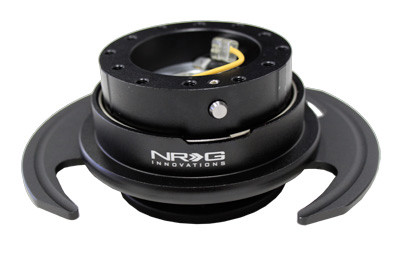 |
5) Hydraulic E-brake
 Having all these modifications help with looks, help you feel your car better, and stay safe. What about dedicated drifting modifications though? On the inside, you don’t have too many drift-specific modifications, but one thing that any good drift car will have is a hydraulic E-brake.
Having all these modifications help with looks, help you feel your car better, and stay safe. What about dedicated drifting modifications though? On the inside, you don’t have too many drift-specific modifications, but one thing that any good drift car will have is a hydraulic E-brake.
With a typical cable-style handbrake, pulling it hard enough to lock the rear wheels is quite a feat. Not only that, but you are stretching the cable with every pull, making it harder to lock on subsequent pulls. There is also the very real risk of snapping the handbrake cable.
With a hydraulic handbrake, however, you can rip it to your heart’s content, and there’s no cable to break or stretch. Hence the name, the new brake relies on hydraulic pressure to lock up the wheels. Most people run this kind of brake with a Dual Caliper setup in the rear, in order to avoid tampering with stock brakes.
This method mounts a second brake caliper on the rear brake disk, in addition to the stock one. The stock brakes still operate the original caliper, while the new caliper is direct braking from your hydro e-brake. Chris Fix made an awesome video on how to install a hydro e-brake, as well as how to install the dual caliper setup.
| Budget | Quality |
|---|---|
 |  |
6) Aftermarket Gauges
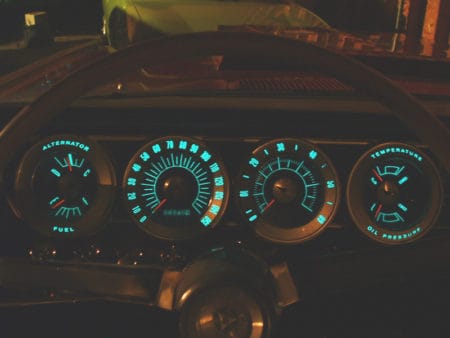 Being able to control your car sideways is only half of drifting. Making sure your car will survive the turn, that’s the other half. If you’re new to drifting, the odds are you’re redlining your car most of the time. While redline is advertised as the highest safe RPM, just sitting on the rev limiter isn’t good for your car. You’ll grow out of this habit as you become a better drifter, however, keeping your engine healthy will still be an issue.
Being able to control your car sideways is only half of drifting. Making sure your car will survive the turn, that’s the other half. If you’re new to drifting, the odds are you’re redlining your car most of the time. While redline is advertised as the highest safe RPM, just sitting on the rev limiter isn’t good for your car. You’ll grow out of this habit as you become a better drifter, however, keeping your engine healthy will still be an issue.
Monitoring your engine’s air temperature, oil temp, oil pressure, boost pressure, along with many other specs is a good way to keep your engine healthy. This way, if you were to put a hole in your oil pan and loose all oil pressure, you would know immediately, and be able to quickly pull over and shut the car off before you do irreparable damage. If you weren’t actively monitoring your oil pressure, you might hear your engine running differently if you knew your car well. Maybe. What if you don’t hear it, and you blow a hole in your block?
Oil isn’t the only major thing that should be monitored. Engine temperature is another massive factor. I owned a 1987 Foxbody Mustang for about 2 hours, and during that 2 hours, I was damn glad it had a temperature gauge. The fan in that car was supposedly hooked up to an interior switch. To nobody’s surprise, it wasn’t. The temperature gauge slowly went up and up, past 100, past 150, okay that’s normal, 200, getting a little worried, 250, holy fuck, PEGGED. That temp gauge went to 300, and it was off the scale. (Here’s the story of my two-hour Mustang Flip)
| Analog | Digital |
|---|---|
 |  |
7) Shift Knobs
 This mod is just as much form as it is function. While most stock shift knobs are awkwardly-shaped, or not quickly grab-able, getting an aftermarket one allows you to choose everything about the knob. It can be leather, plastic, billet aluminum, any material. It can glow, be heated, your imagination really is the limit.
This mod is just as much form as it is function. While most stock shift knobs are awkwardly-shaped, or not quickly grab-able, getting an aftermarket one allows you to choose everything about the knob. It can be leather, plastic, billet aluminum, any material. It can glow, be heated, your imagination really is the limit.
Not just for form, but function as well, as I said before. With most Formula D drivers, they run very tall, long shift knobs. They do this on purpose, in order to make gear changes easier, and keep their eyes on the track ahead. I know they use sequential gearboxes, however, being able to shift is still universal.
| Ball | Cylindrical |
|---|---|
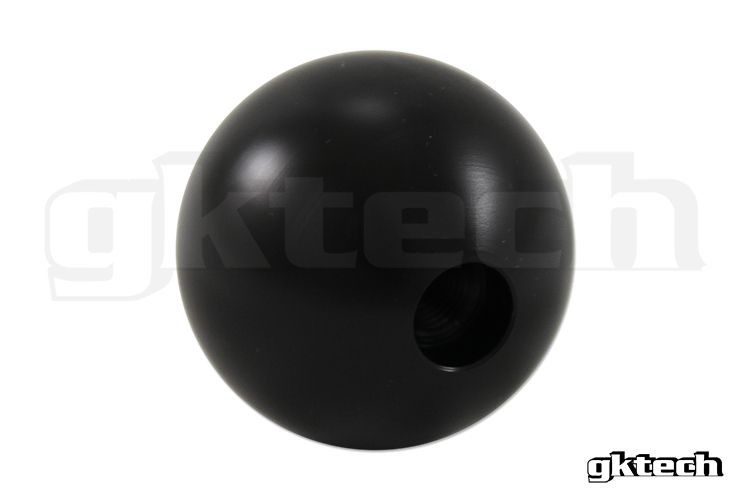 |  |

